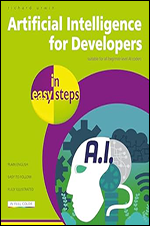AI Practitioner: BERT Best Practices & Design Considerations
Artificial Intelligence
| Expert
- 17 videos | 57m 55s
- Includes Assessment
- Earns a Badge
Bidirectional Encoder Representations from Transformers (BERT), a natural language processing technique, takes the capabilities of language AI systems to great heights. Google's BERT reports state-of-the-art performance on several complex tasks in natural language understanding. In this course, you'll examine the fundamentals of traditional NLP and distinguish them from more advanced techniques, like BERT. You'll identify the terms attention and transformer and how they relate to NLP. You'll then examine a series of real-life applications of BERT, such as in SEO and masking. Next, you'll work with an NLP pipeline utilizing BERT in Python for various tasks, namely, text tokenization and encoding, model definition and training, and data augmentation and prediction. Finally, you'll recognize the benefits of using BERT and TensorFlow together.
WHAT YOU WILL LEARN
-
Discover the key concepts covered in this courseRecall traditional natural language processing techniques and approachesDescribe the limitations of traditional natural language processing techniques and list potential breakthroughsDefine the terms "attention" and "transformer" as they relate to natural language processingSpecify the role of natural language processing techniques like bertDescribe how utilizing bert techniques helps improve search qualityOutline how bert techniques facilitate context specificityList ways of using bert techniques for search engine optimizationDescribe how masking is used in bert
-
Demonstrate how to do data augmentation using masking and bert in pythonIllustrate how to do text tokenization using bert in pythonShow how to do text encoding using bert in pythonDefine a bert model in python and create and compile the bert layer using tensorflowTrain a bert model in python and identify the various hyperparameters for bertDemonstrate how to do data prediction using bert in python, load a trained bert model, create the sample data, and predict using the modelDescribe how the use of the tensorflow package can advance bert techniquesSummarize the key concepts covered in this course
IN THIS COURSE
-
2m 31s
-
3m 50sUpon completion of this video, you will be able to recall traditional natural language processing techniques and approaches. FREE ACCESS
-
3. Limitations of Traditional NLP2m 46sAfter completing this video, you will be able to describe the limitations of traditional natural language processing techniques and list potential breakthroughs. FREE ACCESS
-
4. Attention and Transformers4m 2sIn this video, you will define the terms "attention" and "transformer" as they relate to natural language processing. FREE ACCESS
-
5. Natural Language Processing and BERT4m 18sUpon completion of this video, you will be able to specify the role of natural language processing techniques, like BERT. FREE ACCESS
-
6. BERT and Search Quality3mAfter completing this video, you will be able to describe how utilizing BERT techniques can help improve search quality. FREE ACCESS
-
7. BERT and Context Specificity3m 12sIn this video, you will outline how BERT techniques can help with context specificity. FREE ACCESS
-
8. BERT and Keywords in SEO3m 56sUpon completion of this video, you will be able to list ways of using BERT techniques for search engine optimization. FREE ACCESS
-
9. BERT and Masking2m 53sUpon completion of this video, you will be able to describe how masking is used in BERT. FREE ACCESS
-
10. Using BERT for Data Augmentation4m 6sIn this video, you will learn how to do data augmentation using masking and BERT in Python. FREE ACCESS
-
11. Using BERT for Text Tokenization3m 16sAfter completing this video, you will be able to illustrate how to do text tokenization using BERT in Python. FREE ACCESS
-
12. Using BERT for Text Encoding3m 32sIn this video, you will show how to do text encoding using BERT in Python. FREE ACCESS
-
13. Using BERT for Model Definition4m 33sLearn how to define a BERT model in Python, create the BERT layer, and compile it using TensorFlow. FREE ACCESS
-
14. Using BERT for Model Training4m 11sDuring this video, you will learn how to train a BERT model in Python and identify the various hyperparameters for BERT. FREE ACCESS
-
15. Using BERT for Data Prediction3m 51sIn this video, you will learn how to do data prediction using BERT in Python. You will load a trained BERT model, create the sample data, and predict using the model. FREE ACCESS
-
16. BERT and TensorFlow2m 58sAfter completing this video, you will be able to describe how the use of the TensorFlow package can improve BERT techniques. FREE ACCESS
-
17. Course Summary1m 1sIn this video, we will summarize the key concepts covered in this course. FREE ACCESS
EARN A DIGITAL BADGE WHEN YOU COMPLETE THIS COURSE
Skillsoft is providing you the opportunity to earn a digital badge upon successful completion on some of our courses, which can be shared on any social network or business platform.
Digital badges are yours to keep, forever.







